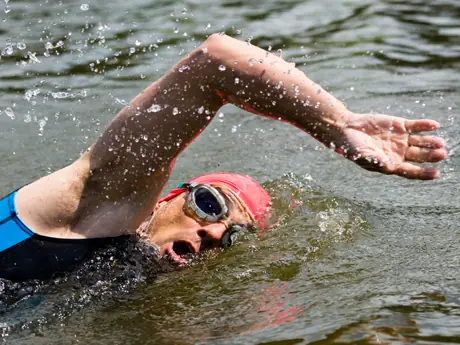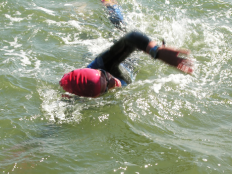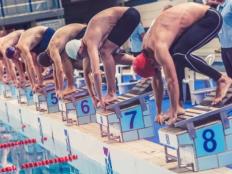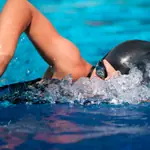
A study by DARPA, the Pentagon's research wing, showed that human swimmers are only 3-percent efficient—as compared to the 80-percent efficiency of dolphins. In other words, dolphins convert 80 percent of energy expenditures into forward motion; in contrast humans divert 97 percent of energy into moving around in the water and moving the water around.
But the subjects in that study weren't even the least efficient swimmers. They at least could swim well enough to participate and all probably thought their swimming was decent.
It's also been estimated that elite swimmers are between 9 percent and 10 percent efficient. This is far better than the rest of us, but still way short of the efficiency of land athletes (nordic skiers, runners, cyclists) which can be as high as 36 percent.
More: Swim Drills: The Key to Efficiency
Most of us are in a somewhat nebulous middle. Is it possible to estimate your own efficiency? Are you 4 percent efficient. Six percent? Maybe even 8 percent?
I've done a thought exercise to estimate my own efficiency. I estimate that I was probably around 5 percent efficient 20 years ago, as I was just beginning to transform my own stroke from human-like to fish-like. Today I optimistically estimate I'm somewhere above 8 percent—based on how well I can substantially increase my speed with relatively moderate increases in effort.
I've drafted a set of experiential descriptions—how your swimming feels, more than a time you may swim for a particular distance—that I believe are fairly good gauges of the level of efficiency you've reached.
More: Dave Scott's Guide to Efficient Swimming
Here's what I came up with:
Efficiency Index of Human Swimmers in Freestyle
Note: Some, but not all, of the experiences listed in each category, can qualify you. For example, you might be 5 percent efficient, but not yet feel fully comfortable in open water.
1 to 2 Percent: Swimming crawl for even the shortest distance (a few strokes) is unpleasant and exhausting. (Though you may be able to swim a bit farther, and even feel reasonably comfortable, using breaststroke.) You experience considerable difficulty and discomfort with staying afloat (you feel your legs sinking) and it's always a struggle—or even panic-inducing—just trying to breathe.
3 to 4 Percent: You can swim for a minute or two continuously. You can extend that distance—up to perhaps as much as 1500 meters—with artificial support from a pull buoy or wetsuit, or with regular rest breaks, but feel somewhat drained afterward. If you do triathlon, you spend part of the cycling leg recovering from the swim, or feel the entire rest of your race is compromised by the difficulty of the swim. Swimming faster seems too much to hope for since even slow paces are so tiring. You never improve, no matter how much you swim. Swimming may feel like a 'good workout, but you do it more out of obligation than enjoyment.
To reach the next level you need: Balance.
- 1
- of
- 2
About the Author

Get ACTIVE on the Go


Meet Mobile
Swim smarter: heats, lane assignments and real-time results in the palm of your hand.
Available for iOS | Android







Discuss This Article